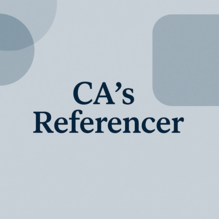Overhaul of GST processes in works for easier compliance, faster refunds
New Delhi, Oct 29, 2025
The government is finalising a major GST overhaul with automated refunds, pre-filled returns, and analytics-based scrutiny to simplify compliance and boost liquidity for MSMEs
The government is preparing a comprehensive overhaul of goods and services tax (GST) processes, spanning digitised scrutiny, automated refunds, and data-driven return-filing. The reforms, being finalised by the Central Board of Indirect Taxes and Customs (CBIC), are aimed at improving transparency, easing compliance, and ensuring quicker fund releases for businesses, particularly micro, small, and medium enterprises (MSMEs), according to a senior government official.
As part of the move towards full automation, the return-filing system is being redesigned to enable auto-population of key forms using data from e-invoices, e-way bills, and supplier filings. The idea is to introduce pre-filled returns and reduce manual intervention.
An email sent to the finance ministry remained unanswered till the time of going to press.
"Data from multiple sources — including Tax Deducted or Collected at Source (TDS/TCS) filings, import declarations on ICEGATE (Indian Customs Electronic Gateway), and outward supply returns (GSTR-1) — will be synchronised on the GST Network to create a unified data backbone. This integration is expected to simplify filing, improve input tax credit (ITC) matching, and allow real-time detection of discrepancies through system-based checks. It will also help speed up refund processing and credit reconciliation for exporters and MSMEs," the official said.
The CBIC is simultaneously developing a digital scrutiny mechanism for GST returns through online issuance and submission of Forms ASMT-10 and ASMT-11. "Scrutiny will be triggered through analytics-based checks, comparing data across GSTR-1, GSTR-3B, and GSTR-2B, along with e-invoice records. Once discrepancies are detected, Form ASMT-10 will be automatically generated and issued online while taxpayers can submit explanations and documents digitally," another official told Business Standard. The reform is aimed at ensuring uniformity in scrutiny and minimising the scope for subjective interpretation. Sources said internal testing is in advanced stages, with a pilot expected in the next quarter.
A parallel initiative seeks to automate refunds for excess balances in the electronic cash ledger, which currently requires manual application under Section 54 of the CGST Act even when the excess arises from system-generated transactions such as TCS collected by e-commerce operators. Under the proposed mechanism, refunds will be algorithm-based, automatically identifying eligible balances and processing them within defined timelines to improve liquidity and compliance convenience.
Abhishek A Rastogi, founder of Rastogi Chambers, said the proposal addresses a long-pending demand, particularly from small and digital sellers on e-commerce platforms. “TCS deducted by e-commerce operators often remains unutilised in the taxpayer’s cash ledger, creating working capital pressure. An automated, rule-based refund within a fixed timeframe would ease this burden significantly,” he said, adding that system-driven verification could enhance transparency and reduce physical follow-ups with tax officers.
In parallel, CBIC is upgrading its data analytics and AI-based systems to flag anomalies across GST filings, e-way bills, and e-invoices," said the second official. He added that once the new return, scrutiny, and refund systems are stabilised, the next phase of reform will focus on digitising GST audit processes. This would further reduce physical interface, bring consistency in audit procedures, and enable faster closure of assessments.
As reported earlier by Business Standard, the Prime Minister’s Office, along with the MSME and finance ministries, is preparing a reform package to cut compliance costs and boost productivity in the sector.
IN A NUTSHELL
Govt preparing major overhaul of GST processes to simplify compliance and speed up refunds
Return forms to be auto-populated using e-invoice, e-way bill, and supplier data
System-based scrutiny to be done through online Forms ASMT-10 and ASMT-11
Refunds for excess cash ledger balances to be automated through algorithm-based checks
Next phase to focus on digitising GST audit processes
Move expected to ease liquidity pressure on MSMEs and small businesses
[The Business Standard]


